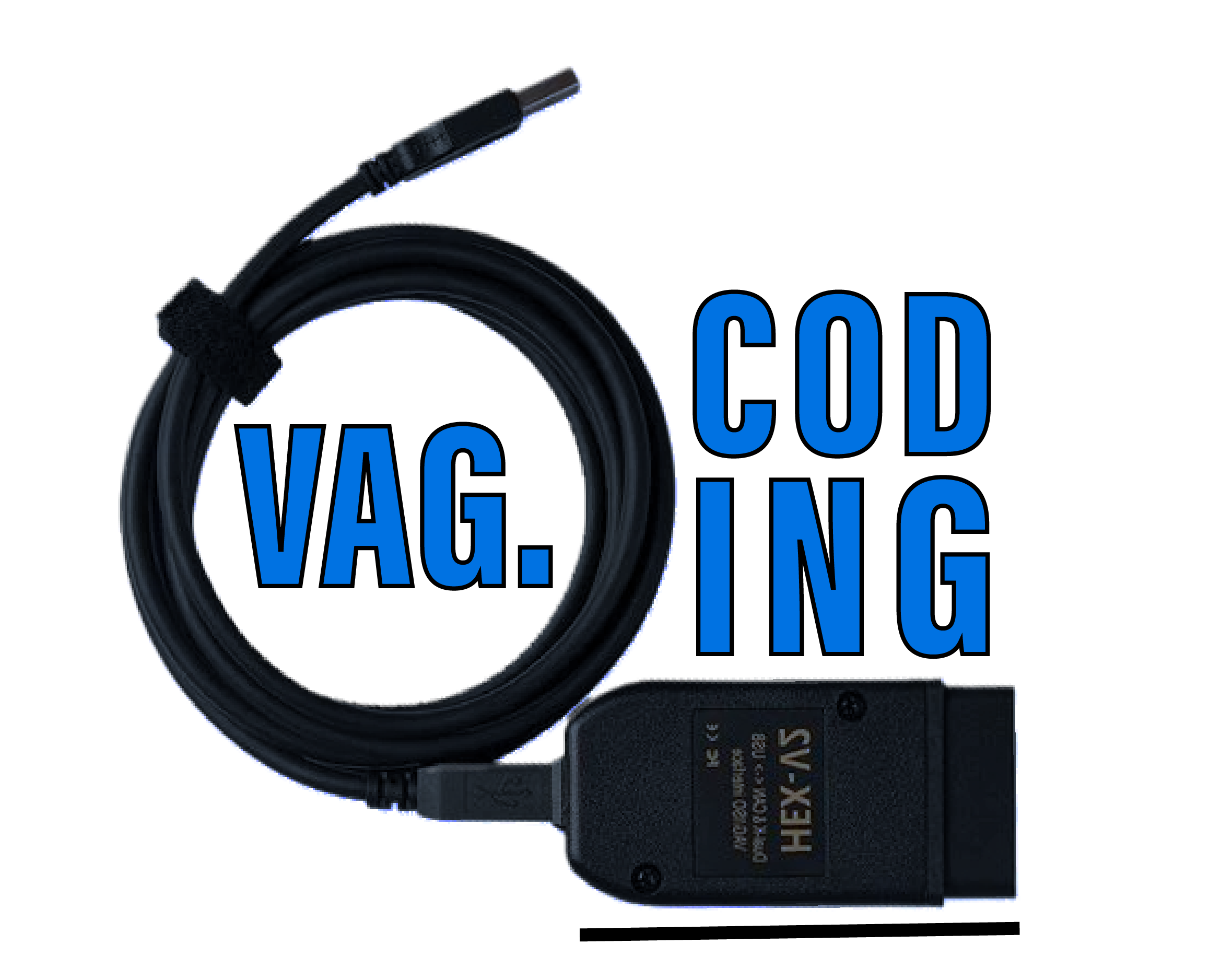Cooling system drain (LDR) procedure with VCDS ?
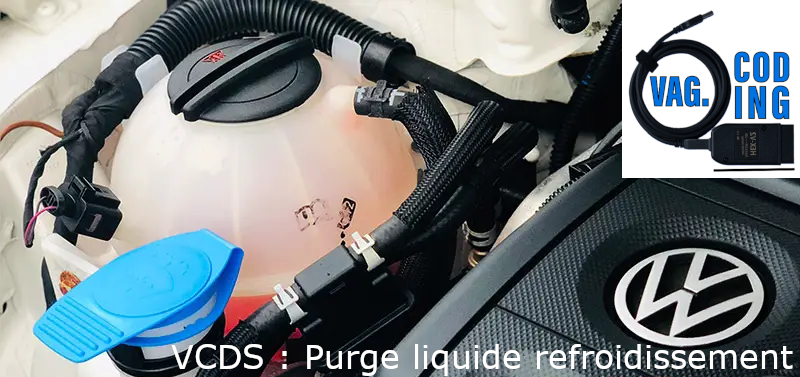
For diesel engine EA288 (1.4TDI, 1.6TDI, 2.0TDI) and petrol engine EA888 (1.8 & 2.0 TSI / TFSI)
Why can’t these engines be purged the old-fashioned way, or at least not easily?
In the past, to bleed a circuit, all you had to do was fill the circuit, idle the engine until the calorstat opened to bleed the engine, and open the heater to bleed the heating circuit. In some cases, air bubbles could be easily evacuated using bleed screws at the top of the circuit.
The EA288 motor is equipped with:
– A traditional cooling circuit, but the mechanical water pump is fitted with an electrically-controlled bell which allows it to be “disengaged” according to T°C conditions.
– A charge air cooler circuit equipped with an additional electric pump
– A heating circuit also equipped with an additional electric pump.
– In some cold countries, these engines are equipped with auxiliary heaters.
Since these engines have the particularity of not heating up much (when the needle reads 90°, the actual temperature doesn’t even reach 80°), we had to add a number of devices to ensure that, in winter, not only could the engine reach operating temperature quickly, but also that passengers could enjoy warm air from the ventilation nozzles from the very first kilometers.
As the system is so voluminous (nearly 8.5L on the 2.0TDI) and riddled with valves and pumps that can’t be opened or controlled manually, it’s virtually impossible to bleed the system properly without spending ages on it. In the case of the heating circuit, for example, the valves are electrically controlled, so if the sensor that gives the command to open the valve is in an air pocket, you can always turn the heating knob to the red, but the valve will never open.
Using VCDS, you can control these valves and pumps cyclically, enabling you to purge the circuit without fear of any remaining air.
The procedure consists of 2 steps. The first consists of purging the engine cooling circuit while the engine is running, while the second consists of purging the low-temperature part of the engine when the engine is stopped.
-> VCDS: Secure Access Code List
-> VCDS: Checking mileage
-> VCDS: Reset DSG
WARNING, you must have a fully charged battery or a connected charger/maintainer (the latter is strongly recommended)!!!!
Step 1, purge engine cooling circuit.
Fill up the expansion tank, connect the VCDS, switch on the ignition without starting and connect to the 01-Motor ECU.
[16-Secure access] enter the code proposed by VCDS if necessary
[10-Adaptations]: “IDE08287-Cooling circuit air purge control > new value = Enabled> [Save!]
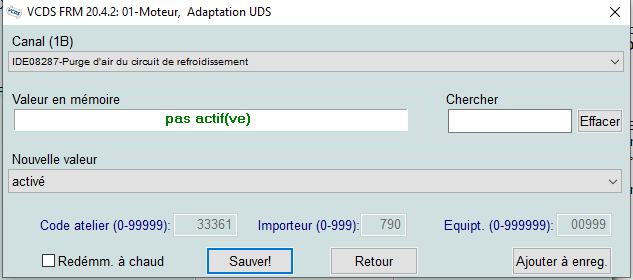
Wait 10 sec and start the engine at idle.
[04-Basic settings] > [Display measurement data] Check the values:
IDE00021 / IDE00322 / IDE00450 / IDE00787 / IDE07725
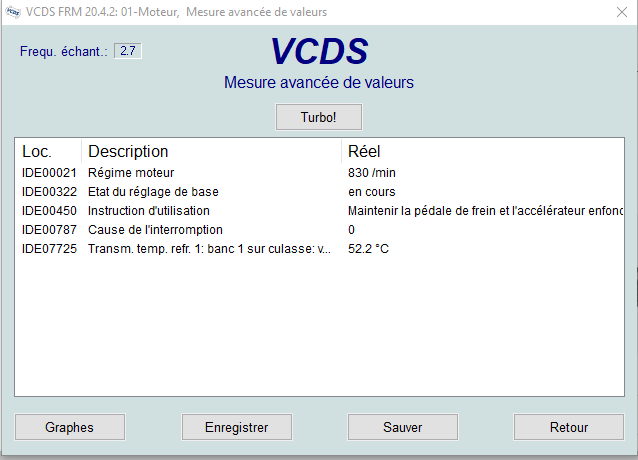
Leave this window open, then return to
[04-Basic settings]: “IDE08087-Control – cooling circuit air purge > [Go!]
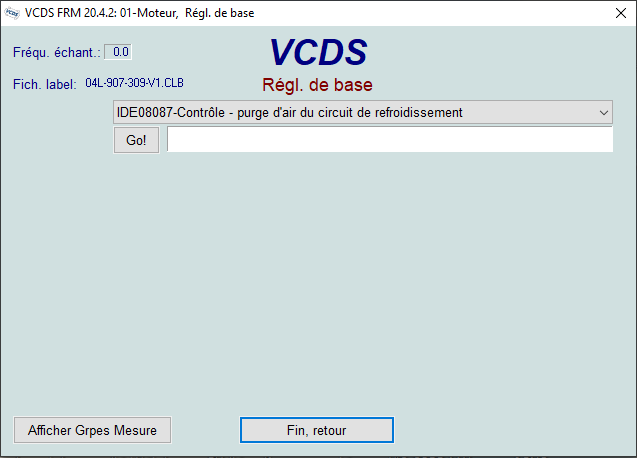
Keep the brake and gas pedal pedals depressed (use shims to avoid cramping…)
This stage lasts about 15 minutes, with the engine alternating between idle, 2500 and 3000 rpm
During this stage, keep an eye on the fluid level in the vessel!
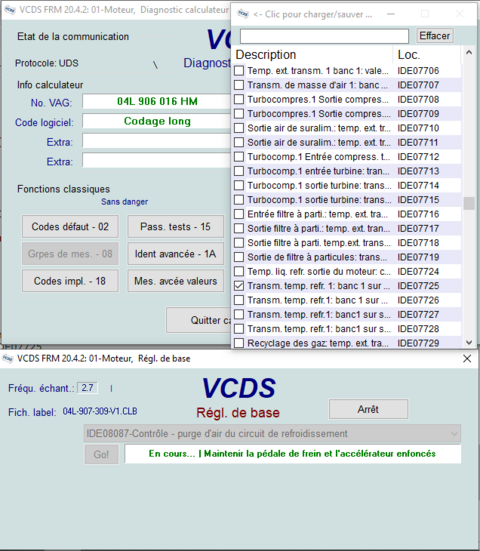
The process is underway…
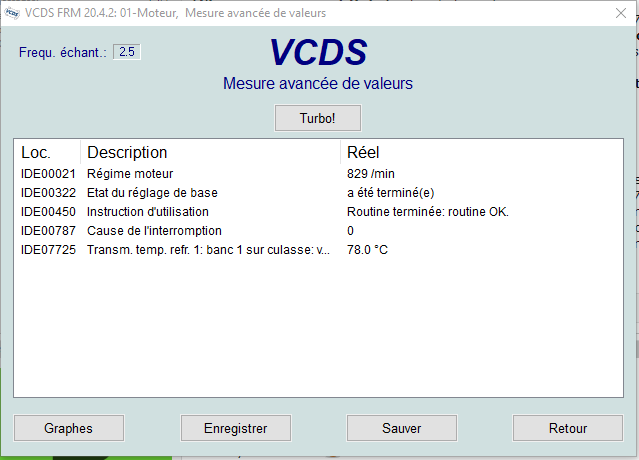
At the end of the cycle, the lines IDE00322 and IDE00450 indicate that this step is complete – click on [Stop].
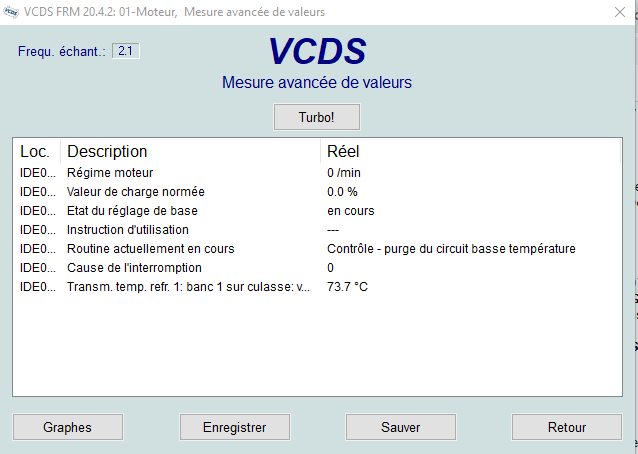
Stop the motor
Step 2, purge the low-temperature circuit.
[16-Secure access] enter the code proposed by VCDS if necessary
[04-Basic settings] > [Display measurement data] check the values:
IDE00021 / IDE00085 / IDE00322 / IDE00450 / IDE00451 / IDE00787 / IDE07725
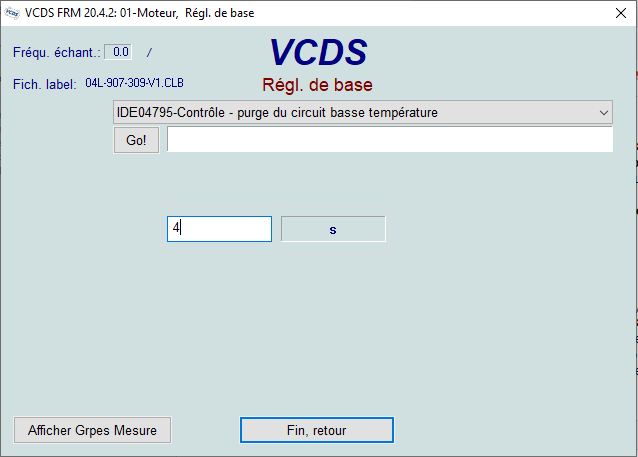
Leave this window open, then return to
[04-Basic settings]: “IDE04795-Control – low-temperature circuit air purge > 4S > [Go!]
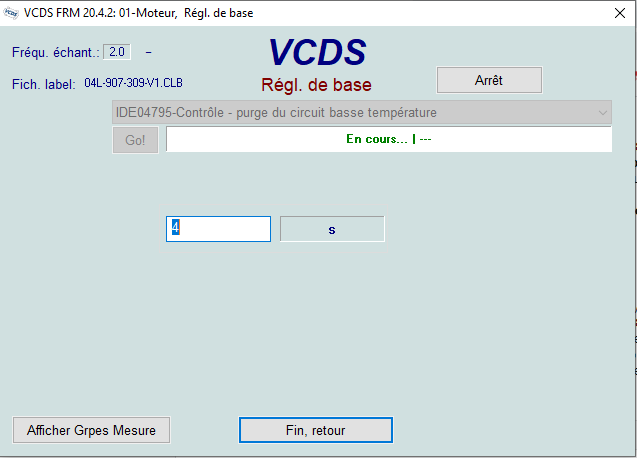
This stage lasts about 10 minutes, and you can hear the various pumps working, the pipes gurgling and bubbles occasionally rising in the vase.
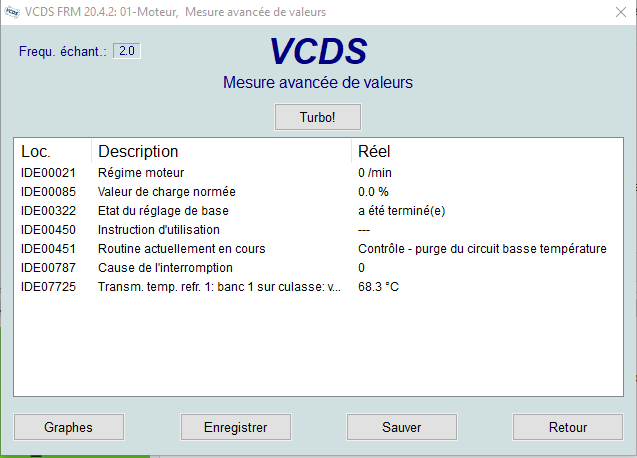
At the end of the cycle, the IDE00322 lines indicate that this step has been completed and you can click on [Stop].
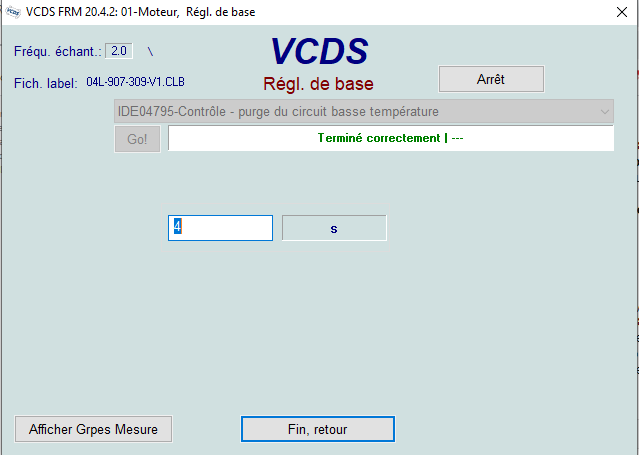
Repeat step 2 at least 2 times (3 times in total) and as many times as necessary as long as the “gurgling” sound is heard and/or bubbles are rising in the vessel.
Check the fluid level before going for a test drive (take a can in the trunk and check the level after driving a few km).
